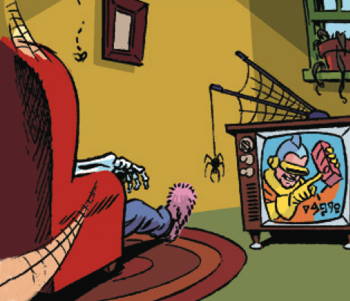June 2019
June 16, 2019
Follies of the Madmen #429
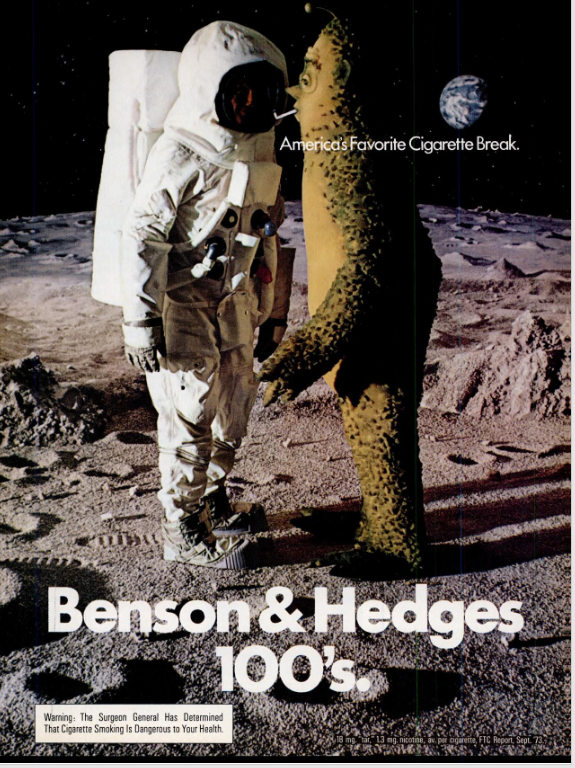
Posted By: Paul - Sun Jun 16, 2019 -
Comments (0)
Category: Aliens, Business, Advertising, Tobacco and Smoking, 1970s
June 15, 2019
RIP Leon Redbone (1949-2019)
A truly odd, enigmatic musician. As noted by his obit in the Independent:For a long time, almost no biographical info was known about him. Many suspected he wasn't even a real person. Perhaps someone such as Frank Zappa or Bob Dylan was posing as Redbone. But no, Redbone was real. He died on May 30.
Posted By: Alex - Sat Jun 15, 2019 -
Comments (2)
Category: Music, Obituaries
Skin Tight, Pin Striped, Purple Pedal Pushers
Posted By: Paul - Sat Jun 15, 2019 -
Comments (1)
Category: Fashion, Music, Public Indecency, 1960s
June 14, 2019
The Rewards of Heroism
If there were a Cheapskate's Hall of Fame, the Chicago Board of Education would surely have to be in it. In 1994, after gym teacher Clarence Notree heroically saved a group of children from a gunman who had entered the school gym by shielding them with his body, the Board of Education informed him that he wasn't entitled to Workers Compensation for his injuries because saving children wasn't technically part of his job.After a protracted legal battle, he did finally get a settlement of $13,447.
More info: NY Times

Opelousas Daily World - Sep 30, 1994

Franklin Daily Journal - Sep 30, 1994
Posted By: Alex - Fri Jun 14, 2019 -
Comments (0)
Category: Jobs and Occupations, Lawsuits, 1990s
Worst Cereal Name and Ingredients Ever?

Source.
More info here.
Posted By: Paul - Fri Jun 14, 2019 -
Comments (1)
Category: Business, Advertising, Food, Twentieth Century, Nausea, Revulsion and Disgust
June 13, 2019
The Death Test
It's officially known by the acronym CrisTAL (Criteria for Screening and Triaging to Appropriate Alternative Care), but it's more widely known as the Death Test. It's a 29-point checklist to help doctors determine if elderly patients are at risk of dying within the next three months. So, it seems like a more rigorous version of the "Surprise Question" which (as we've posted about before) is another test docs use to predict imminent death.More info: funeralwise.com
The Death Test:
1. Altered level of consciousness (Glasgow Coma Score change >2 or AVPU=P or U)
2. Blood pressure (a systolic blood pressure of less than 90 mm Hg)
3. Respiratory rate of more then five and less than 30
4. Pulse rate of less than 40 or more than 140
5. Need for oxygen therapy, or known oxygen saturation of less than 90 per cent
6. Hypolglaecemia blood glucose level (less sugar in the blood than normal)
7. Repeat or prolonged seizures
8. Low output of urine (less than 15 mL/h or less than 0.5 mL/kg/h) or a MEW or SEWS score of more than 4
9. Previous history of disease, including:
10. Advanced cancer
11. Kidney disease
12. Heart failure
13. Various types of lung diseases
14. Strokes and vascular dementia
15. Heart attack
16. Moderate to severe liver disease
17. Mental impairment such as dementia or disability from a stroke
18. Length of stay before this RRT call (>5 days predicts 1-year mortality)
19. Repeat hospitalisations in the past year
20. Repeat admission to the intensive care department of the hospital
21. Frailty
22. Unexplained weight loss
23. Self-reported exhaustion
24. Weakness (being unable to grip objects, being unable to handle objects or lift heavy objects of less than or equal to 4.5kg,
25. Slow walking speed (walks 4.5m in more than 7 seconds) or is
26. Inability to do physical exercise or stand
27. Is a nursing home resident or lives in supported accommodation
28. Having urine in their blood (more than 30mg albumin/g creatinine
29. Abnormal ECG (irregular heartbeat, fast heartbeat and any other abnormal rhythm or more than or equal to 5 ectopics/min and changes to Q or ST waves)
Posted By: Alex - Thu Jun 13, 2019 -
Comments (2)
Category: Death, Medicine
The House in the Middle
Atomic bombs hate slums, but respect a nice clean domicile.
Posted By: Paul - Thu Jun 13, 2019 -
Comments (4)
Category: Buildings and Other Structures, Death, Destruction, Domestic, War, 1950s
June 12, 2019
Yogurt For Men
From the history of odd marketing decisions: The launch of Powerful Yogurt in 2013, promoted as "For Men, By Men," because apparently regular yogurt wasn't masculine enough.
Powerful Yogurt is still around, but it now promotes itself as being for people with "active lifestyles," rather than just for men. It offers some explanation on its website for the change of focus:
The massive positive response from active women and men alike pushed the brand to fully evolve to an active lifestyles brand in late 2013. It was clear that Powerful had struck a chord with active people across the world, even being named “Best Yogurt” at the 2013 World Dairy Congress in Switzerland.
I'm guessing online mockery also played a role in their change of focus.
More info: Jezebel.com
Posted By: Alex - Wed Jun 12, 2019 -
Comments (2)
Category: Food, Advertising, Products
Lennette Newell’s Ani-Human Photos
Her home page.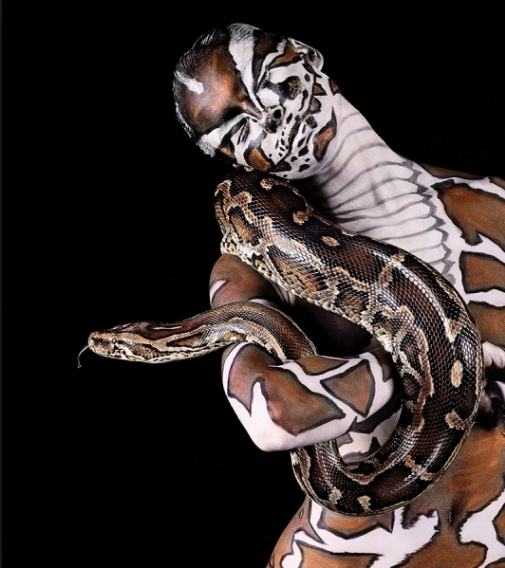


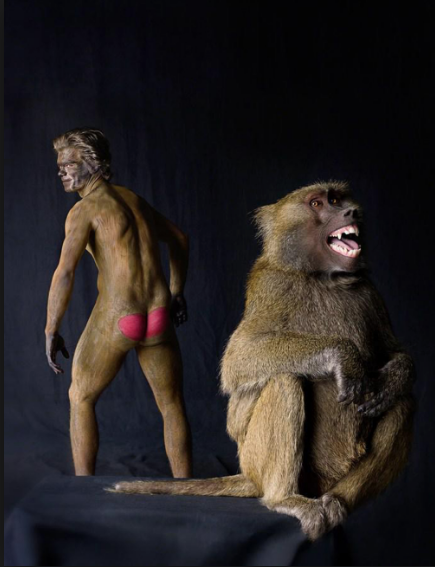
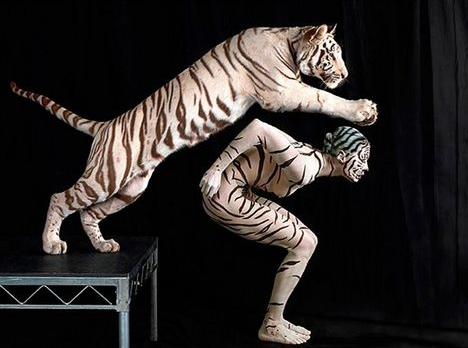
Posted By: Paul - Wed Jun 12, 2019 -
Comments (2)
Category: Animals, Photography and Photographers, Body Painting
June 11, 2019
Bic Perfume
Bic is known as a maker of disposable lighters, pens, and razors. But back in 1989, the company decided it could extend its brand to French perfume. So, it debuted Parfum Bic. Syndicated columnist Rick Ratliff (Detroit Free Press - Mar 27, 1989) explained the reasoning behind the product:If it's gamble had succeeded, the Bic executives would have looked like marketing geniuses. But of course, Parfum Bic didn't succeed. Within several years, it had disappeared from shelves.
If you're curious to try it, you can pick some up on eBay for about $50.

Posted By: Alex - Tue Jun 11, 2019 -
Comments (1)
Category: 1980s, Perfume and Cologne and Other Scents
| Get WU Posts by Email | |
|---|---|

| Who We Are |
|---|
| Alex Boese Alex is the creator and curator of the Museum of Hoaxes. He's also the author of various weird, non-fiction books such as Elephants on Acid. Paul Di Filippo Paul has been paid to put weird ideas into fictional form for over thirty years, in his career as a noted science fiction writer. He has recently begun blogging on many curious topics with three fellow writers at The Inferior 4+1. Chuck Shepherd Chuck is the purveyor of News of the Weird, the syndicated column which for decades has set the gold-standard for reporting on oddities and the bizarre. Our banner was drawn by the legendary underground cartoonist Rick Altergott. Contact Us |
